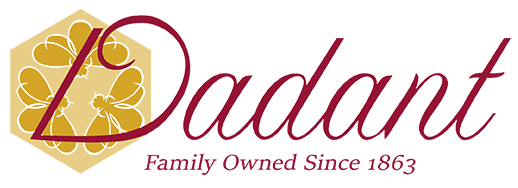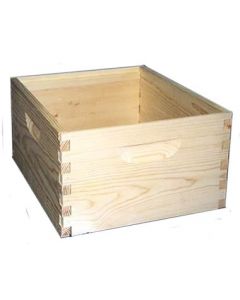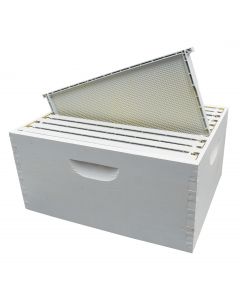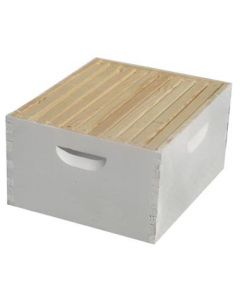Deep (10-Frame)
Choosing a Deep Super
The basic configuration of a Langstroth hive was created with bees’ natural instincts in mind. In simple terms, brood production occurs at the bottom of the hive, whereas bees make and store honey at the top.
Types of Supers
There are three types of supers that beekeepers use: deep, medium, and shallow.
A deep super is 9 5/8" deep. A medium super is 6 5/8" deep. A shallow super is 5 11/16” deep.
Deep supers are most often used as the “hive body,” where the queen lays her eggs and raises brood. Shallow supers are most commonly used as a honey super. Medium supers can be used as a brood chamber and honey super.
Deep Super vs. Medium Super
Because it is larger than a medium super, a deep super will hold more resources for bees. However, this super will be heavier than a medium super when full. A medium super is known as a brood box is often called a Western, or Illinois Super.
The best advantage of using a medium super is that it is about two-thirds lighter than a full deep super. Some beekeepers may use two medium supers in place of a single deep. However, using all medium supers will require you to use more supplies and inspect more frames overall. These additional frames will also increase the amount of work needed to extract honey during the harvest.
Wood Grades
Most of our supers are made from durable Ponderosa pine, and each board has been moisture-metered before cutting to assure proper moisture content and prevent warping. Dadant offers them painted and assembled as well as unassembled supers in a variety of wood grades.
Select-grade wood is a high quality wood that only has small tight knots and no changes in the joints or rabbets.
Commercial-grade wood is the most popular choice by beekeepers. Tight knots can be found throughout the super made out of Ponderosa pine.
Economy-grade wood has the same specifications as commercial-grade but is of lower quality. This grade of wood is perfect for the beekeeper on the budget that is just starting out.
Our deep supers can come either assembled or unassembled and in different grades of wood.
Location
The amount of brood boxes may also depend on your location. A single deep box is often sufficient for bees in Southern climates. In Northern regions, however, two deeps are usully utilized for the hive in order to provide additional room for brood rearing and winter food storage.
Connecting with local beekeeping groups may be the best way to determine whether you need one or two deep supers.
The Bottom Line
If you’re looking for additional brood production space, a deep super is your best option. If you want a lighter hive and don’t mind using additional resources, then you have the option to use a medium super.
Overall, using larger boxes and frames would be more efficient, but this also means that you would have to deal with additional weight. Assess how much weight you can comfortably handle before making your decision.




![[13" Version] 10-Frame Moisture Box Handle Replacement Assembly](https://www.dadant.com/catalog/media/catalog/product/cache/61da60bd5ee8ab16f86f3b06568ed40e/m/6/m60060-01-handlereplacementassembly-10-frame-for-moisturehive-web.jpg)
![[16¼" Version] 10-Frame Moisture Box Handle Replacement Assembly](https://www.dadant.com/catalog/media/catalog/product/cache/61da60bd5ee8ab16f86f3b06568ed40e/m/6/m60060-01r-moisture-box-handle-3_web.jpg)







